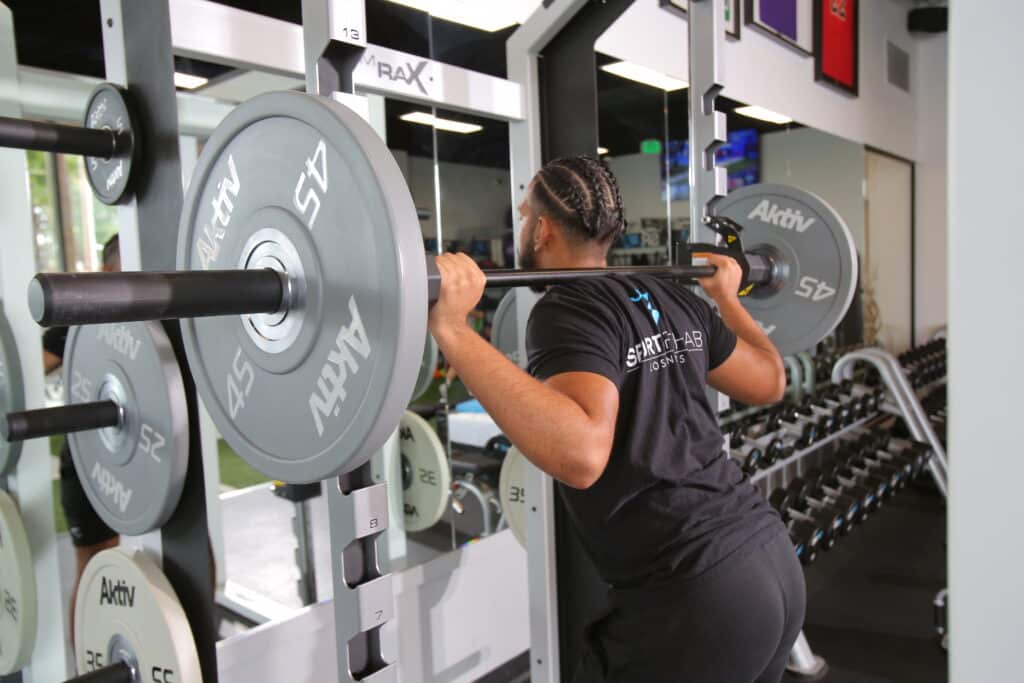By: Andrew Gavigan, Director of Education, Aktiv Solutions
For decades, the Smith machine has been a fixture in gyms worldwide, offering a sense of security and stability for various strength training exercises. However, its fixed bar path has always been a source of debate, raising concerns about its impact on natural movement patterns and potential for injury. While the classic Smith machine has many strengths, the revolutionary new GYM RAX® SMITH S3D Trainer™ (S3D) targets its weaknesses and aims to bridge the gap between safety and natural movement.
The Classic Smith Machine
The Smith machine, originally developed by fitness icon Jack Lalanne but popularized by gym manager Rudy Smith in the 1950s, has been a staple at gyms around the world since its inception (Wood, 2013). Smith machines are intended be used for a variety of foundational strength training movements, with a relative amount of safety and training efficiency compared to dumbbells or Olympic bars. The reality, however, is that a limited range of motion, and its restricted ability to support natural human movement mechanics, can sometimes cause more harm than good.
Problems With the Classic Smith Machine
The underlining issue that most fitness professionals share related to a traditional Smith machine is with the fixed bar path. On one hand, the fixed bar can add an element of safety by reducing weight drops and forcing compensation of strength if one side of the body or another could use it. Unfortunately, the body rarely moves along such a fixed path naturally and the very nature of such compensations or restrictions of stabilization are what are most desired to functionally condition the body.
The isolated “up” and “down” movement of the bar limits the natural “forward” and “back” movement required in several key exercises and functional movements. The classic chest press, squat, and bent over row for example, all require a limited, but critical amount of movement in multiple plains. This is essential in order to gain the best range of motion and protect the back and joints (Schick et al, 2010). As such, the lack of stability challenge is widely considered the second largest negative attribute of the classic Smith machine.
Benefits and New Solutions
The Smith machine has remained an inclusion due to its approachable design, and often marketed as an “on-boarding” tool or gateway for those gym-goers not ready or able to engage with strict free weights. Given the relative safety of a fixed track combined with “safety-hooks”, the system is designed to prevent major falls or excessive weight drops. The reduction of injury and weight drops are as much of a benefit to facility operators as they are the users themselves. This makes the Smith machine conceptually a strong solution for corporate gyms or fitness amenities that border living or quiet quarters.
The new GYM RAX SMITH S3D Trainer™ (S3D) was designed to encapsulate the traditional benefits associated with the popularity of a traditional Smith machine, but to drastically improve its form and function. With enough freedom in its bar and carriage system, the S3D incorporates more fluid and biomechanically correct movement throughout a full range of barbell exercises while enabling the security features of a suspended barbell. The S3D offers multiple barbell locking points throughout its patent-pending carriage, meaning the user can re-engage the safety catch at any time, no matter where they are within their movement.

Likely the greatest benefit of this innovation is the accommodation of not simply beginning lifters, but those that want to work with larger weight loads within a natural motion, without the requirement of a spotter or the setup of a squat rack system. Moving from one exercise to the next is far easier to orchestrate given that the barbell need never be removed from the carriage itself. Further, the built-in safety stops can be adjusted with ease to support every change in exercise, an area that unfortunately is often overlooked with standard squat racks due to their cumbersome adjustments. The S3D can still be used for some of the staple moves that over time have worked well on a traditional Smith machine. These include fixing the bar at the desired height, and then conducting elevated pushups, or chest ups, rows, or simply to use as a stable grip for clients with balance issues.

The Future of Strength Training
The classic benefits of the Smith machine combined with the solutions designed in the new and improved S3D make way for a bright future for strength training and exercise. Reducing barriers to entry, while improving functionality, safety, and outcomes, speaks to the growing trends in the fitness industry, and the practices of fitness professionals worldwide. This opens the door, not only in health clubs and training studios, but in training spaces that may have traditionally not been as accepting to Olympic bar training. A brand new age for weightlifting is here to stay with the S3D.
References:
John Wood (February 8, 2013). ”The Smith machine”. oldtimestrongman.com. Retrieved March 16, 2019.
Schick, Evan E; Coburn, Jared W; Brown, Lee E; Judelson, Daniel A; Khamoui, Andy V; Tran, Tai; Uribe, Brandon P; Reyes, Christian. A Comparison Of Muscle Activation Between A Smith machine And Free Weight Bench Press. Journal of Strength and Conditioning Research 24():p 1, January 2010. | DOI: 10.1097/01.JSC.0000367207.18161.d7




